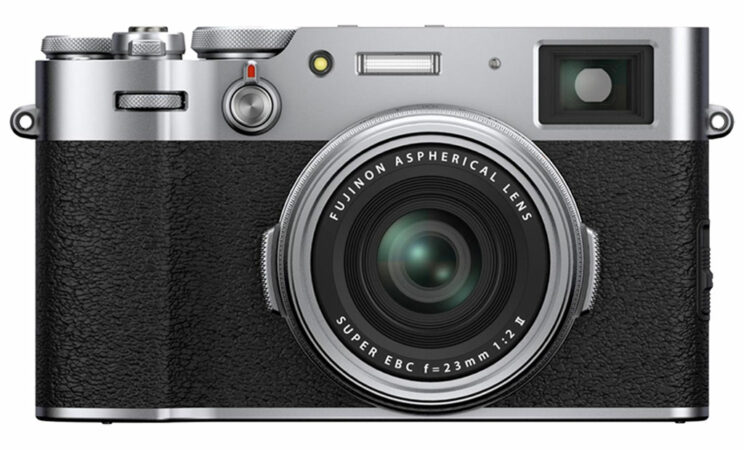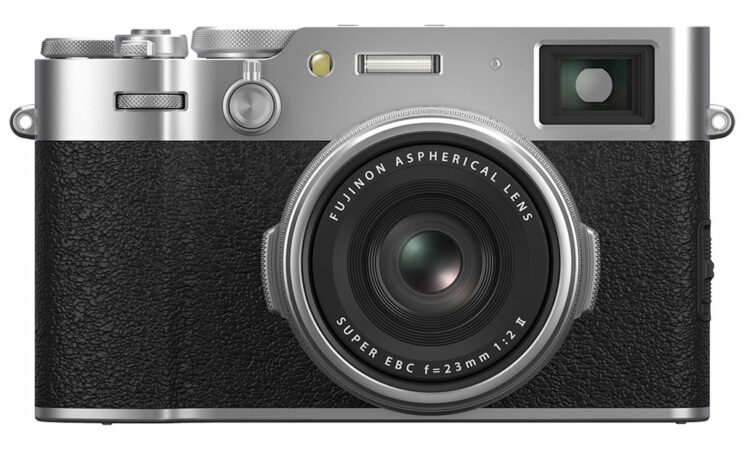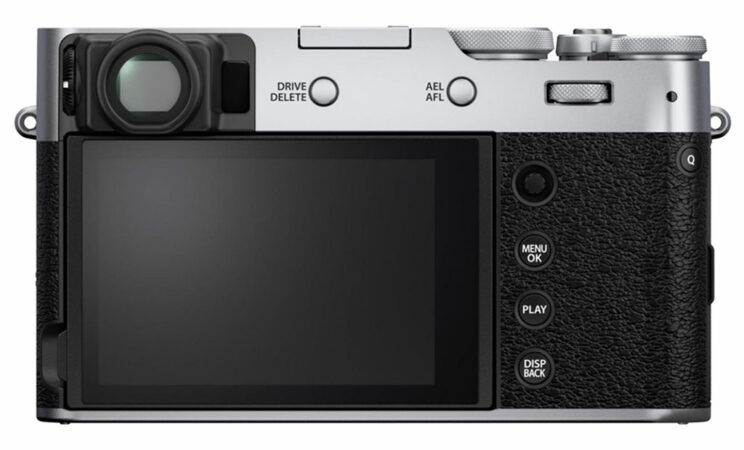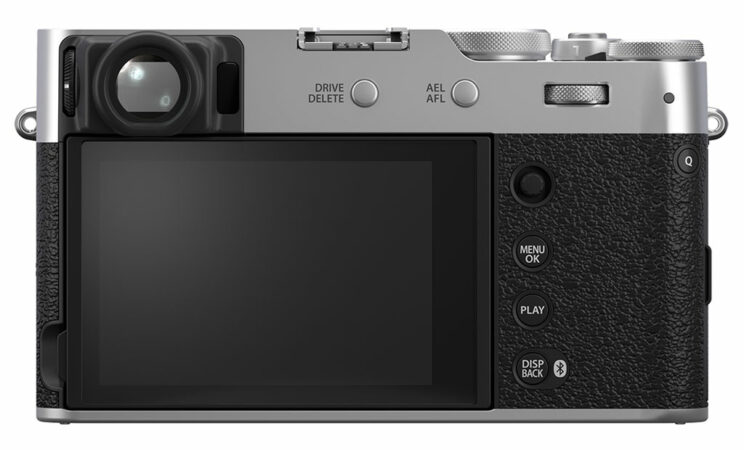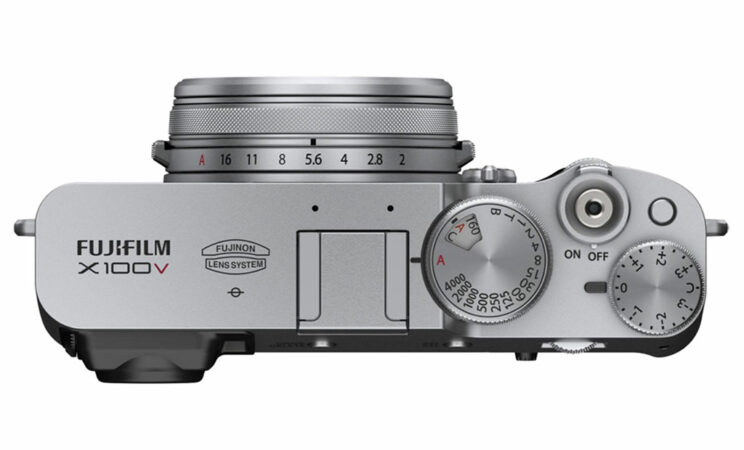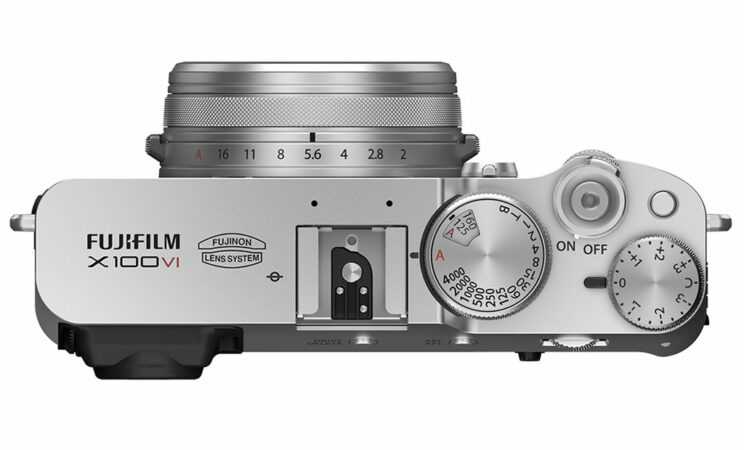The iconic Fujifilm X100 compact camera series has reached its 6th generation. The new X100VI arrives 13 years after the first model and 4 years after the fifth model, the X100V. The latter saw a curious surge in popularity around 2022, courtesy of social media and influencers, causing Fujifilm to grapple with demands (also due to the recent pandemic and consequent chip shortage).
In this comparison preview, I’ll highlight all the main differences between the X100V and X100VI. But first, a quick list of what they have in common:
- APS-C format
- 23mm f2 lens version II (35mm equivalent)
- 4 stops Built-in ND filter (works for video too)
- Hybrid viewfinder with 0.5-in OLED 3.69M dots EVF (0.66x magnification), and Reverse Galilean OVF (95% FOV, 0.52x magnification)
- Electronic Rangefinder option for the OVF
- Tilting 3″ LCD monitor (1.62M dots) with touch capabilities
- Body design and controls
- NP-W126S battery with similar rating
- UHS-I Single Card Slot (yep, still no UHS-II !)
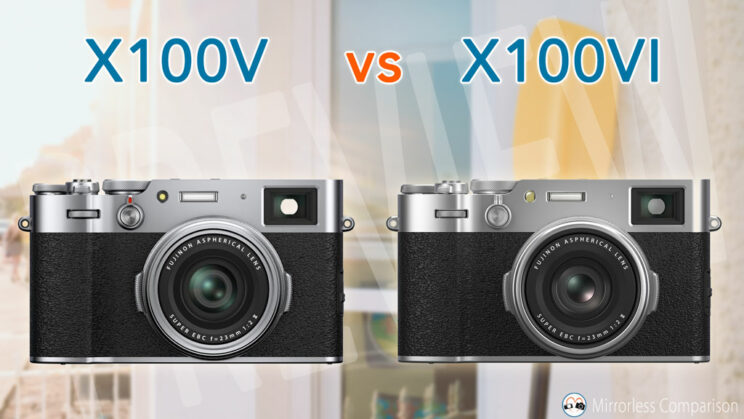
Ethics statement: the following is based on official specs for the X100VI, and our personal experience with Fujifilm sensors and the X100V. We were not asked to write anything about this product, nor were we provided any compensation of any kind. Within the article, there are affiliate links. If you buy something after clicking one of these links, we will receive a small commission. To know more about our ethics, you can visit our full disclosure page. Thank you!
1. Sensor
The X100V shares the same 26MP sensor found in many other Fuji models such as the X-T3, X-T4, X-S20 and X-T30.
The X100VI inherits the 40MP sensor introduced with the X-H2 flagship interchangeable-lens camera. This is the highest resolution of any APS-C sensor to date.
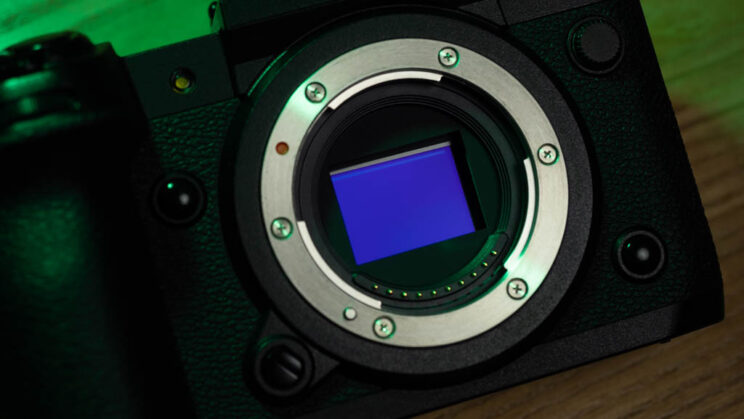
Both sensors feature a back-illuminated design (BSI) and Fujifilm’s proprietary X-Trans pattern, as opposed to the more conventional Bayer array. The new camera also receives the latest X Processor 5, which is twice as fast as the X Processor 4 found in the X100V.
Regarding ISO sensitivity, the range is very similar, with the VI model starting at a lower base level.
Camera
Normal range
Extended range
X100V
160 – 12,800
80 – 51,200
X100VI
125 – 12,800
64 – 51,200
We are familiar with the X100V’s image quality, and we had the opportunity to test the 40MP sensor in our X-H2 review. What I can say is that despite the higher megapixel count, the 40MP sensor performs surprisingly well in terms of high ISO, with noise well-contained up to 6,400 ISO. Dynamic range is also very good and should be similar between the two cameras.
2. In-Body Image Stabilisation
For the first time in the X100 series, we get 5-axis image stabilization thanks to the new X100VI. The system can compensate up to 6 stops when using the LCD or EVF, and 5.5 stops when using the optical viewfinder.
Fujifilm hasn’t disclosed why there is a difference between the two viewfinders. DPreview speculates that the processor analyses the image to fine-tune the performance, and that might not happen when using the optical VF.
The good news is that stabilization will also be effective when recording video. This will give the VI model a distinctive advantage over its predecessor when taking photos at slow shutter speeds, or when recording movies.
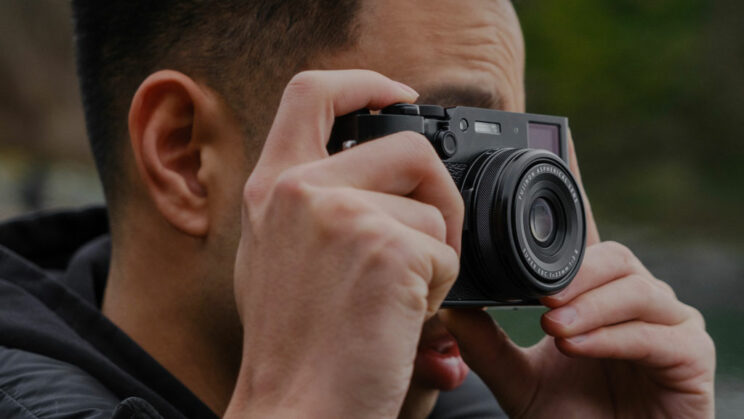
3. Video
The X100VI has the same video capabilities as the X-T5. It can record 10-bit files in either 6.2K 30p (with a 1.23x crop), 4K 30p (no crop), and 4K 60p (1.14x crop).
The 4K recording modes are line-skipped, so the camera doesn’t use all the pixels to create the footage, resulting in a loss of details.
Also, it’s worth noting that 4K recording is limited to 45 minutes per clip. While I couldn’t find the same information for 6.2K, it’s reasonable to suspect that the maximum duration may be shorter.
The X100V can record 4K and DCI 4K up to 30p, with internal recording limited to 8-bit and 10 minutes per clip.
In Full HD, the 6th generation model can go up to 240fps with the High-Speed Recording mode, whereas the previous model stops at 120fps.
Both cameras feature the F-Log gamma curve and have a maximum bitrate of 200Mbps (Long GOP compression). Additionally, the X100VI also includes the F-Log2 profile that provides an extra stop of dynamic range.

4. Autofocus
The X100VI features Fujifilm’s latest autofocus system iteration, which incorporates machine-learning subject detection. The camera can recognise animals, birds, cars, motorcycles, airplanes, and trains. Face and eye detection for humans is also available, albeit through a different setting.
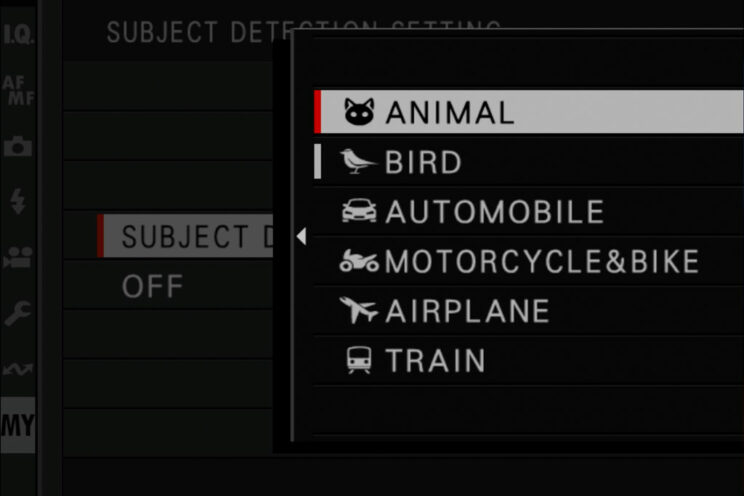
In contrast, the X100V only offers face and eye detection for people, and the algorithm is not as advanced as that of the new model.
Furthermore, the X100VI gains a dedicated AF Tracking mode when recording videos, and tracking is also reported to have improved for stills when using the optical viewfinder.
5. Image Settings
The X100VI introduces a new Film Simulation mode called Reala ACE, which was first seen in the GFX 100 II medium format camera. Fujifilm states that it “combines faithful color reproduction and hard tonality.” You can see some examples of photographs taken with Reala ACE in this video by photographer Gabriel Bailey:
Additionally, other options make their way into the new camera, such as the ability to save photos in the 10-bit HEIF format and the Skin Smoothing effect.
6. Drive
The new X100VI can operate at up to 11fps with the mechanical shutter or 20fps with the electronic shutter, although it’s important to note that the latter involves a 1.29x sensor crop.
The older X100V can achieve the same 11fps with the mechanical shutter. When switching to electronic mode, the burst rate increases to 20fps (full sensor) or 30fps (1.25x crop).
Additionally, for the first time in the X100 lineup, the VI model offers the Pre-shot mode, which allows users to save frames before the shutter button is fully pressed (electronic shutter only).
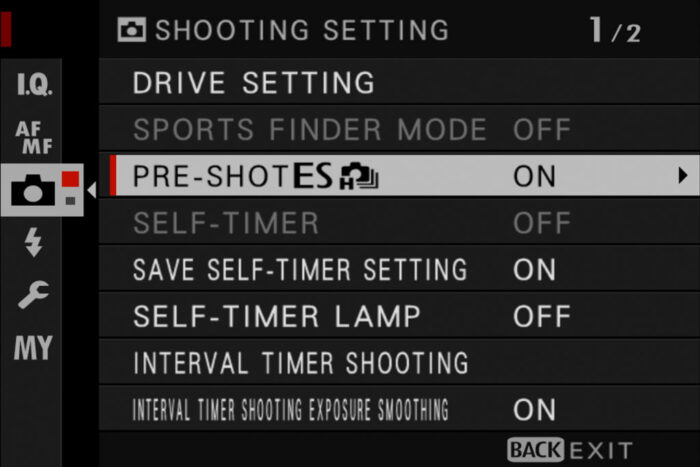
7. Shutter Speed
Both cameras rely on a leaf shutter mechanism with a maximum exposure speed of 1/4000s.
When switched to the electronic shutter, the X100VI can reach an impressive 1/180,000s, which may seem overkill for this type of camera, but it could prove useful on occasion when shooting at the fastest aperture outdoors under very bright sunlight.
For reference, the previous model can go as fast as 1/32,000s.
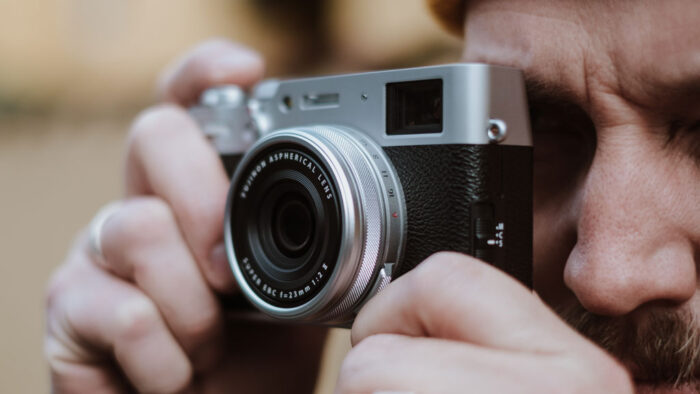
8. Camera To Cloud
The X100VI supports the c2c system (camera-to-cloud). Users can connect their camera to a Wi-Fi network and upload images and videos directly to Adobe’s Frame.io cloud platform, without the need for a smartphone or laptop intermediary.
Files can be uploaded automatically as they are captured, or manually uploaded at a later time. Additionally, users can choose which type of file to send to the cloud (JPGs, RAWs, HEIFs).
9. Size and Weight
The design of the two cameras is identical for the most part. The new model is 2mm deeper and 43g heavier, but these differences are unlikely to be noticeable in real-world use. Most existing accessories should be compatible, including leather cases.
- X100V: 128 × 74.8 × 53.3mm, 478g
- X100VI: 128 × 74.8 × 55.3mm, 521g
Both cameras are weatherproof, provided you install the filter ring adapter and a filter, such as the official AR-X100 adapter ring and PRF-49 protect filter, although third party options will also work.
Regarding the rear, the touch LCD can tilt down to 45˚ on the new camera, whereas the monitor on the previous model stops around 30˚.
Additionally, the DRIVE/DELETE button has been slightly repositioned at the back to improve comfort when working with the viewfinder.
10. Price
The new X100VI was launched at a retail price of $1600 / £1600 / €1800.
In comparison, the older X100V was available at $1400 / £1350 / €1600, although we understand it will be discontinued and replaced by the new model.
Fujifilm has faced numerous production issues with the X100V, partly due to the chip shortage and the Covid pandemic. To keep up with demands, the production of the new camera has shifted from Japan to China.
Conclusion
Finding a brand-new X100V has been a challenge for the past couple of years, so it’s likely that going forward, the new X100VI will be your only option, unless you’re happy to look at the second-hand market where older models can be found (beware of some used X100V being sold at ridiculous prices).
Is the new X100VI a worthy successor? Well, I admit that most of the updates, like the 40MP sensor or the new AF algorithm, were easy to predict, as they are technologies already available on other Fuji cameras. But the inclusion of in-body stabilization is a pleasant surprise. It certainly makes the X100VI a more complete camera for all situations where slow shutter speeds are key, and you don’t want to fiddle with a tripod.
The 40MP sensor is very good. I really enjoyed the image quality I got out of the X-H2, so I am sure the X100VI won’t disappoint.

The autofocus update won’t interest everyone, as this is not a camera intended for tracking birds or cars necessarily. However, the improvement with Eye AF for humans should be a welcome addition. Similarly, regarding video, it’s not a product aimed at video-makers or content creators, but the presence of in-body stabilisation will certainly make the X100VI more user-friendly on the go.
Last but not least, there’s the increase in price. While we can certainly find reasons for it, such as inflation or the higher cost of materials and parts, it does make the X100 series an expensive premium product now. It’s a shame that such an iconic camera is becoming less and less affordable.

